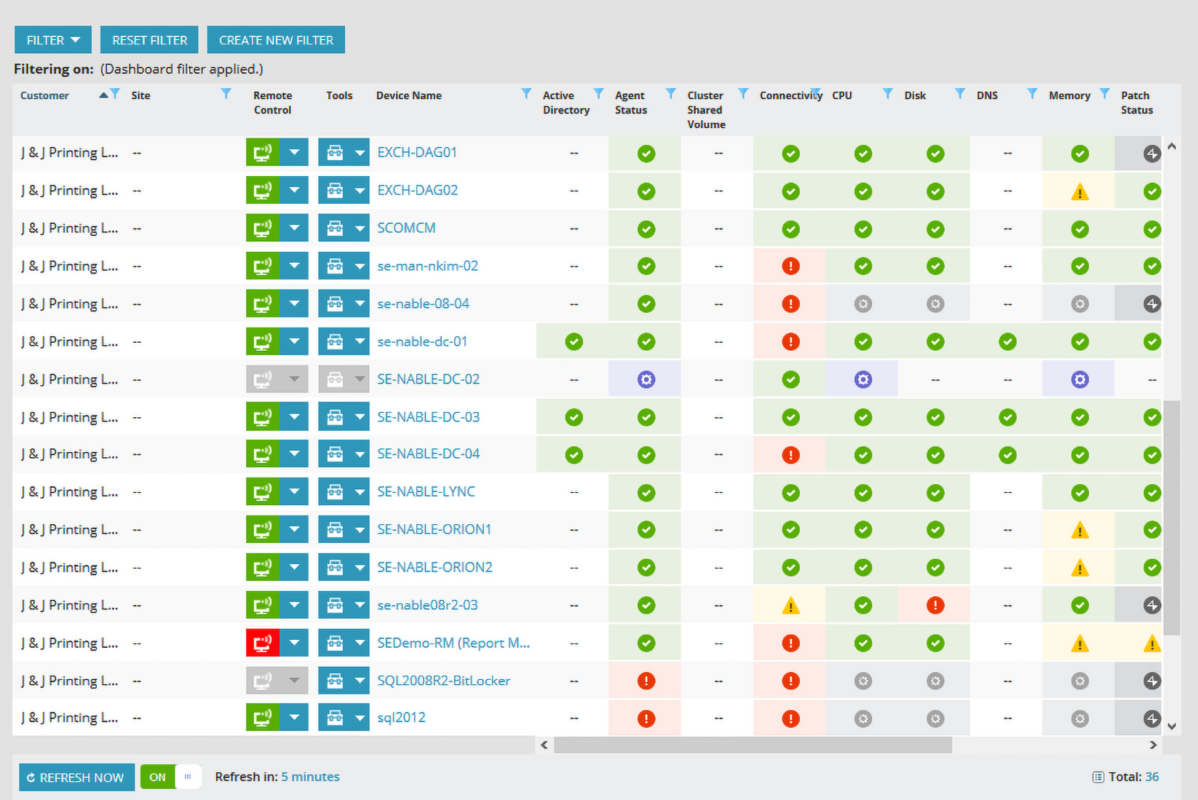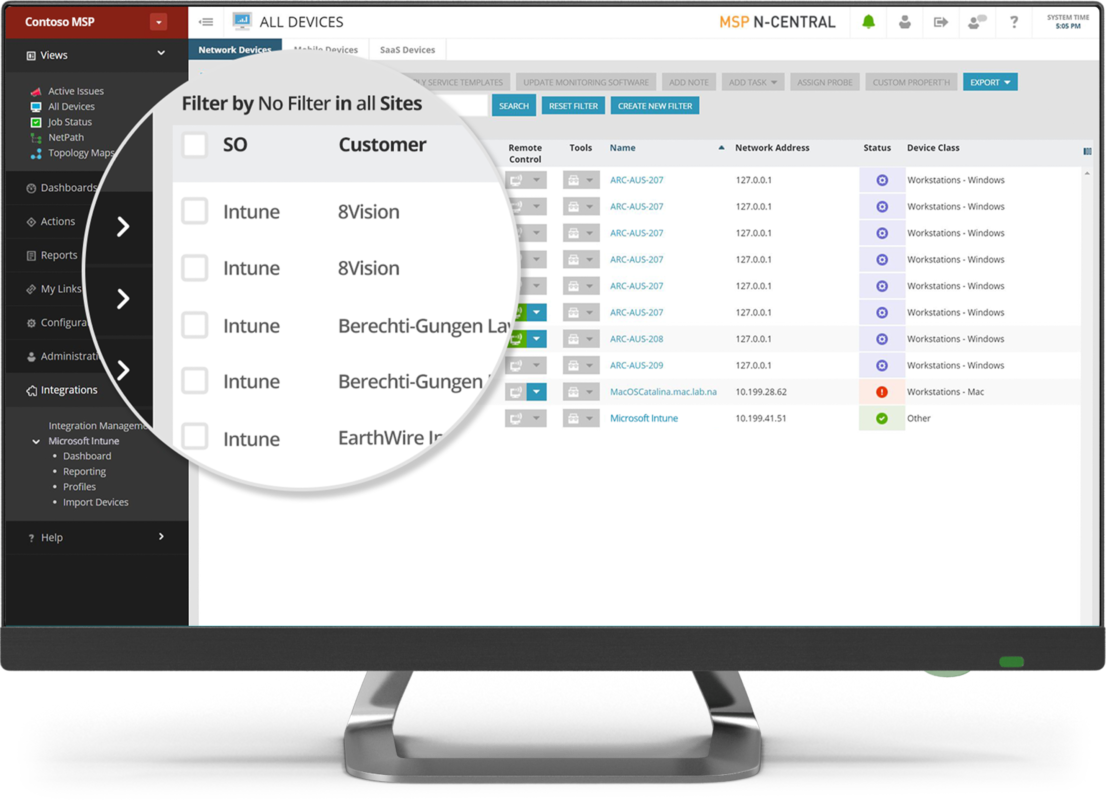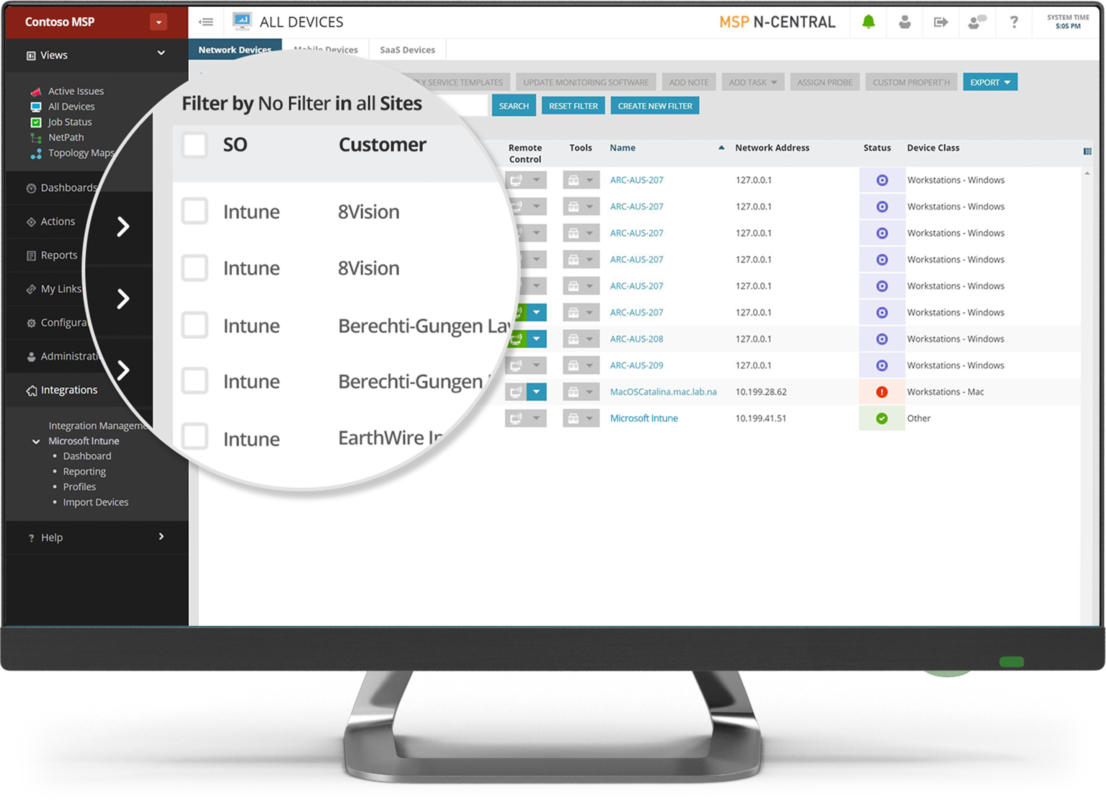n Able remote monitoring & management is a powerful suite of tools that empowers IT professionals to manage and secure their systems from anywhere, anytime. By leveraging the capabilities of remote monitoring and management (RMM) solutions, businesses can gain unprecedented control over their IT infrastructure, ensuring optimal performance, security, and compliance.
Table of Contents
This technology has revolutionized the way IT teams operate, enabling them to proactively identify and resolve issues before they impact end-users. From automated patch management and software deployment to comprehensive system monitoring and remote troubleshooting, RMM solutions provide a comprehensive toolkit for modern IT management.
Integration with Other Tools

RMM solutions are designed to streamline and automate IT operations, but their power is amplified when integrated with other essential IT tools. This integration creates a unified ecosystem where data flows seamlessly, enhancing visibility, efficiency, and overall IT infrastructure management.
Integration with Ticketing Systems
Integrating RMM with ticketing systems streamlines the process of managing and resolving IT issues. When an issue is reported through a ticketing system, the RMM solution can automatically gather relevant system information, allowing technicians to quickly diagnose and resolve problems. This integration improves communication and collaboration between IT staff and users.
- Automated Ticket Creation: When an RMM tool detects an issue, it can automatically create a ticket in the integrated ticketing system, providing immediate notification to the IT team.
- Issue Tracking and Resolution: Ticketing systems provide a central repository for tracking the progress of issues, allowing technicians to monitor their status and ensure timely resolution.
- Improved Communication: Users can easily report issues through the ticketing system, while technicians can access detailed information about the problem through the RMM integration.
Integration with Monitoring Platforms
Integrating RMM with monitoring platforms provides a comprehensive view of the IT infrastructure’s health and performance. RMM tools can collect real-time data on system performance, network traffic, and resource utilization, which can then be shared with monitoring platforms for analysis and alerting.
Remote monitoring and management solutions are invaluable for businesses of all sizes, providing a centralized view of systems and applications. A key aspect of this approach is ensuring that IT staff have the skills to effectively manage these systems, which is where a program like typing master for pc can be beneficial.
By enhancing typing speed and accuracy, employees can navigate and manage remote systems more efficiently, ultimately leading to better overall performance and productivity.
- Proactive Issue Detection: By integrating with monitoring platforms, RMM tools can proactively detect potential issues before they escalate into major problems.
- Real-time Performance Insights: RMM data provides valuable insights into system performance, allowing IT teams to optimize resource allocation and improve overall efficiency.
- Automated Alerts: Monitoring platforms can trigger alerts based on RMM data, notifying IT staff of critical issues or performance anomalies.
RMM’s Contribution to Enhanced IT Infrastructure, N able remote monitoring & management
The integration of RMM with other IT tools significantly enhances the overall IT infrastructure, leading to improved efficiency, reduced downtime, and increased security. This integrated approach allows IT teams to:
- Automate Repetitive Tasks: RMM tools can automate tasks such as software updates, patch management, and system backups, freeing up IT staff to focus on more strategic initiatives.
- Centralize Management: RMM solutions provide a centralized platform for managing all IT assets, simplifying administration and reducing the risk of configuration errors.
- Improve Security Posture: By integrating with security tools, RMM solutions can help enforce security policies, monitor for vulnerabilities, and respond to threats more effectively.
Best Practices for Effective RMM

Remote monitoring and management (RMM) tools are essential for IT professionals who need to manage and secure their clients’ systems remotely. By implementing effective RMM practices, you can streamline operations, improve security, and increase efficiency.
Regular Maintenance and Updates
Regular maintenance and updates are crucial for maintaining a healthy and secure RMM system. Updates often include security patches, bug fixes, and new features that enhance the functionality and performance of the RMM tool. Neglecting updates can leave your system vulnerable to security threats and performance issues.
- Schedule automatic updates: Configure your RMM tool to automatically download and install updates regularly. This ensures that your system is always up-to-date with the latest security patches and bug fixes.
- Test updates in a staging environment: Before deploying updates to your production environment, it’s a good practice to test them in a staging environment. This allows you to identify and resolve any potential issues before they affect your live systems.
- Monitor update logs: Keep track of all updates and their installation dates. This will help you troubleshoot any problems that arise and ensure that your system is patched against the latest threats.
Optimizing RMM Settings for Performance and Security
Optimizing your RMM settings can significantly improve the performance and security of your system. By configuring the settings appropriately, you can ensure that your RMM tool is operating efficiently and effectively.
- Set appropriate scan schedules: Configure the RMM tool to scan for vulnerabilities and security threats at regular intervals. This helps to identify and address issues before they escalate into serious problems.
- Configure network monitoring: Monitor network traffic to identify potential security threats and performance bottlenecks. This can help you detect malicious activity and optimize network performance.
- Enable security features: Leverage the built-in security features of your RMM tool, such as antivirus protection, firewall management, and intrusion detection systems. These features can help to protect your systems from malware, unauthorized access, and other threats.
- Implement role-based access control: Assign specific roles and permissions to users to control their access to the RMM system. This helps to ensure that only authorized individuals have access to sensitive data and configuration settings.
Case Studies and Real-World Applications: N Able Remote Monitoring & Management

Remote monitoring and management (RMM) solutions are transforming how businesses manage their IT infrastructure, offering a plethora of benefits, from increased efficiency to improved security. Real-world applications showcase the tangible impact of RMM, highlighting its ability to streamline operations, enhance productivity, and mitigate potential risks.
Examples of RMM in Action
RMM solutions are widely adopted across various industries, demonstrating their versatility and adaptability. Here are some examples of how businesses are leveraging RMM:
- Healthcare: Hospitals and clinics rely on RMM to ensure the uptime of critical medical equipment, patient data security, and compliance with HIPAA regulations. RMM solutions allow IT teams to remotely monitor and manage medical devices, ensuring their proper functioning and preventing downtime that could disrupt patient care.
- Education: Educational institutions leverage RMM to manage and support a large number of student and faculty devices, often dispersed across multiple locations. RMM simplifies software deployment, patch management, and troubleshooting, allowing IT staff to address issues quickly and efficiently, minimizing disruptions to learning.
- Financial Services: Financial institutions prioritize data security and compliance, making RMM an essential tool. RMM solutions enable them to enforce security policies, monitor network activity, and detect and respond to potential threats, safeguarding sensitive financial data and maintaining regulatory compliance.
Impact on IT Efficiency and Productivity
RMM solutions have a significant impact on IT efficiency and productivity, freeing up IT staff to focus on strategic initiatives rather than routine tasks.
- Automated tasks: RMM solutions automate repetitive tasks such as software updates, patch management, and system backups, reducing the workload on IT staff and allowing them to focus on more complex issues.
- Proactive maintenance: RMM enables proactive maintenance by monitoring system performance, identifying potential issues before they become major problems. This reduces downtime and improves system stability.
- Remote access and support: RMM provides remote access and support capabilities, allowing IT staff to troubleshoot and resolve issues from anywhere, reducing the need for on-site visits and minimizing downtime.
Successful Implementations and Lessons Learned
Numerous businesses have successfully implemented RMM solutions, reaping significant benefits. Here are some key lessons learned from successful implementations:
- Clear objectives: Define clear objectives for RMM implementation, such as improving IT efficiency, enhancing security, or reducing downtime. This helps ensure the solution aligns with business needs and delivers the desired outcomes.
- Proper planning and training: Thorough planning and training are crucial for successful RMM implementation. This includes selecting the right solution, configuring it properly, and training IT staff on its use.
- Continuous monitoring and improvement: Regularly monitor RMM performance and make adjustments as needed to optimize its effectiveness. This includes reviewing metrics, gathering feedback from IT staff, and staying updated on best practices.
Outcome Summary
n Able remote monitoring & management solutions are essential for any organization seeking to streamline IT operations, enhance security, and ensure business continuity. By adopting RMM, businesses can optimize their IT infrastructure, reduce downtime, and improve overall productivity. As the technology continues to evolve, we can expect even more innovative solutions to emerge, further empowering IT professionals to navigate the complexities of the modern IT landscape.

